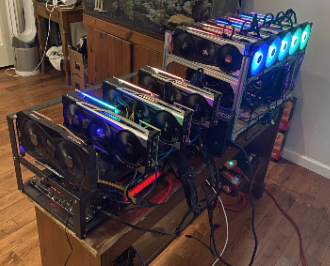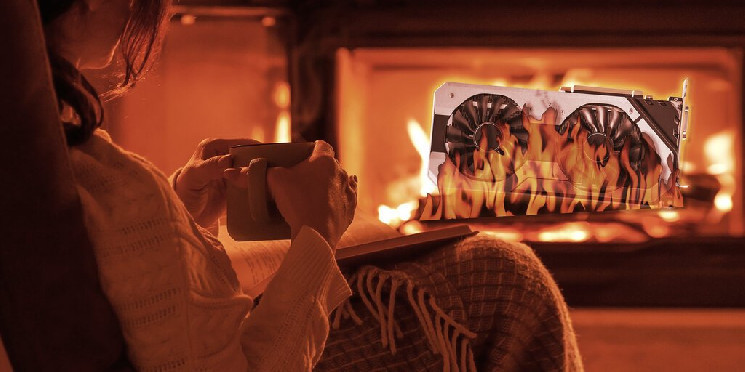
Picture this: You are an Ethereum miner, and for almost ten years your nine-to-five has been the same: wake to the sound of industrial wheezing in your backyard, scarf down a quick breakfast of heavily contaminated Cinnamon Crunch, take an asthmatic jog ‘round the polluted freshwater lake, then head back to the garage where the machines are kept, and where you tend to their inscrutable whims—lest they decline to compensate you with precious ETH.
Having carried on like this for years, you have become very rich—but you remain painfully aware of the inevitable onset of oblivion, which has been scheduled by a bunch of hideous nerds somewhere in the vicinity of Haight-Ashbury.
When the merge finally arrives, as it did last week, your ETH mining world is turned upside down, swept away in minutes.
Setting aside more metaphysical mysteries, one practical question looms large: What can you do with a shed’s worth of pricey GPUs?
Computer graphics processors can facilitate a load of interesting things beyond mining: protein folding for cancer research, high-octane password cracking, and, it goes without saying, the search for extraterrestrial life. (In coin form!)
But what else can you do with them? Can you assemble some kind of hyper-fast graphics unit to increase the verisimilitude of your nightly runs of "Counter-Strike: Global Offensive?" Can you build an artificial heart in advance of that inevitable coronary? Can you heat your squalid home with them to prepare for Putin’s winter?
Weirdly enough, yes—more than a few ex-miners told me they are doing just that.
One miner, who calls himself Alphamine (probably not his birth name) told me that he plans to heat his house with his old power-guzzling GPUs. For now, he’s still mining—albeit a tiny, mostly profitless coin called FLUX, for the pure love of contributing to the crypto ecosystem. He’s making barely ten percent of the profit he made on Ethereum, he told me, but he hopes to amortize his cost by heating his house with roughly 80 GeForce RTX 3060 Ti model GPUs.

Another miner who identified only as “stepwn” also uses old mining rigs for heat—not to heat his home, but to heat his greenhouse. “I've shifted from mining to farming,” he said. Starting with a few small “no-till” plots in his yard, he says he now has a “full blown aquaponics system inside a 200 square-foot greenhouse.”
“Mining,” he added, “taught me that when I have the right equipment in the right conditions I can make passive income, and growing stuff is just using the right equipment to maintain the right conditions for plants. It took a bunch of trial and error but I found the crops that work well for me—okra, tomatoes, beans and peas.”
Truth be told, the greenhouse is heated with Monero (XMR), not ETH chips. He’s got another scheme in mind for the ETH chips: a “PC gaming bar.”
GPUs have other interesting uses, of course. Nick Hansen (probably his birth name) is the co-founder of Luxor, a massive mining pool that aggregated the work of mining clients and distributed rewards among them. For Hansen, the merge killed a singularly lucrative revenue stream.
Hansen’s main preoccupation now is helping his customers find other uses for their hardware—urgently. (A third of them have already switched their GPUs off, he told me.) One promising solution: using the leftover GPUs to power large neural networks, AI data centers and digital rendering products. “We’ll most likely be able to recoup our losses,” Hansen said.
In this context, the GPUs would channel their wild wattage into complex and energy intensive projects like the incredibly popular DALL-E AI image generator, which—if you didn’t already know, you hypocrite!—uses an insane amount of computational power.
As Hansen points out, this somewhat puts the lie to the notion that the merge will dramatically reduce GPU electricity usage. “Those GPUs aren't going to magically go away,” he said. “They’re going to be used for other things.”
It’s a darkly beautiful thought, really: The merge sparking some kind of widespread mining exodus that feeds and empowers the Artificial General Intelligence that will soon turn us into paperclips.
Whether that would be better for the environment remains to be seen.
 decrypt.co
decrypt.co
